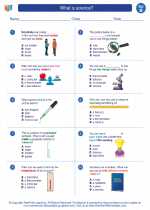Geological Time Scale
The geological time scale is a system of chronological dating that relates geological strata to time. It is used by geologists, paleontologists, and other Earth scientists to describe the timing and relationships between events that have occurred during Earth's history.
Eras and Periods
The geological time scale is divided into several eras, each of which is further divided into periods. The major eras are the Paleozoic, Mesozoic, and Cenozoic, which are further divided into periods such as the Cambrian, Jurassic, and Pleistocene.
Fossils and Rock Layers
Geologists use the geological time scale to correlate rock layers and fossils found in different parts of the world. By studying the distribution of fossils and the sequence of rock layers, scientists can reconstruct the history of Earth and the evolution of life.
Key Events
The geological time scale also helps scientists understand key events in Earth's history, such as the formation of major mountain ranges, the impact of meteorites, and the extinction of species. By placing these events in the context of geological time, researchers can better understand their causes and effects.
Study Guide
- What is the geological time scale and how is it used by scientists?
- Identify the major eras and periods in the geological time scale.
- Explain how fossils and rock layers are used to study Earth's history.
- Describe the significance of key events in Earth's history and how they are related to the geological time scale.
[Geological Time Scale] Related Worksheets and Study Guides:
.◂Science Worksheets and Study Guides Second Grade. What is science?

 Worksheet/Answer key
Worksheet/Answer key
 Worksheet/Answer key
Worksheet/Answer key
 Worksheet/Answer key
Worksheet/Answer key
 Vocabulary/Answer key
Vocabulary/Answer key
